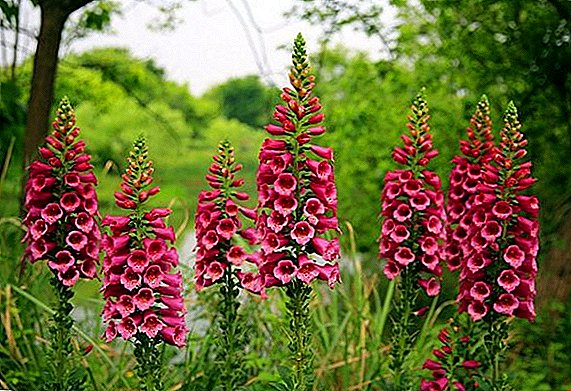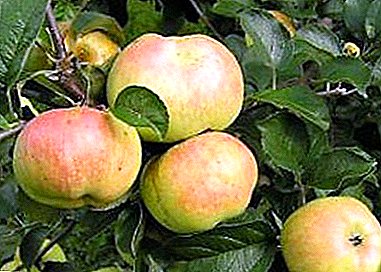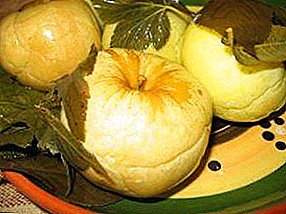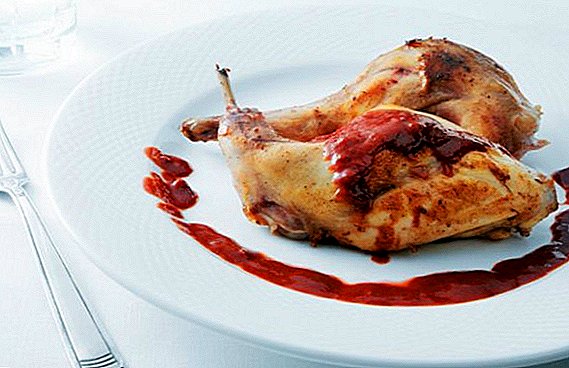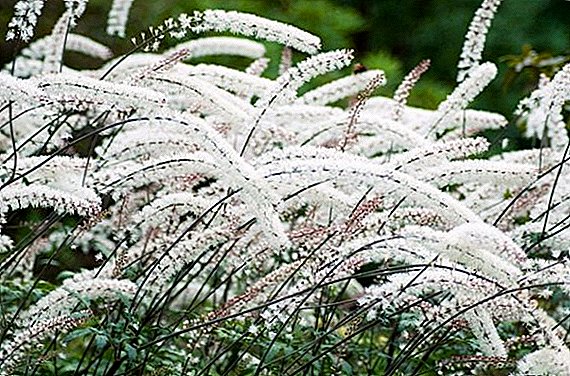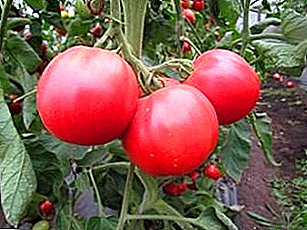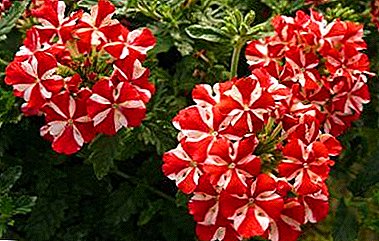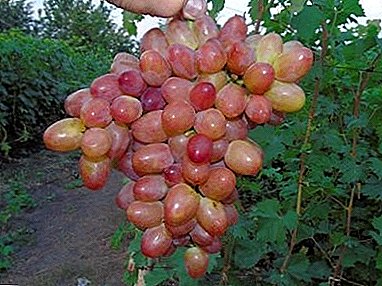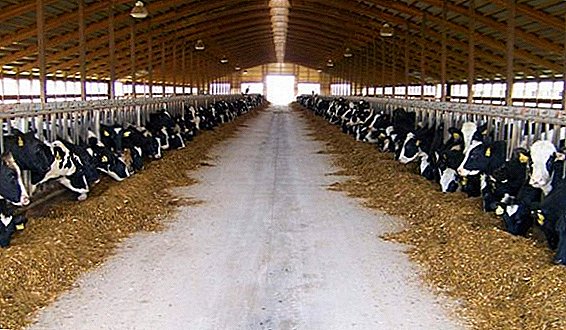 An important factor in animal husbandry are animal welfare conditions. First of all, the microclimate of the room affects the productivity of pets, the rate of weight gain in meat breeds and the survival rate of the young. About what factors you should pay attention, and will be discussed in the article.
An important factor in animal husbandry are animal welfare conditions. First of all, the microclimate of the room affects the productivity of pets, the rate of weight gain in meat breeds and the survival rate of the young. About what factors you should pay attention, and will be discussed in the article.
What is the indoor climate
Under the microclimate mean a combination of factors that characterize the state of the analyzed environment (including the level of security for the long-term stay there).  The concept includes ambient temperature, humidity, air velocity, dustiness, the content of various gases, the level of light and noise. As you can see, this is a complex concept that can change its level depending on the type of room, weather conditions, the type of animals contained in the pen, as well as their number.
The concept includes ambient temperature, humidity, air velocity, dustiness, the content of various gases, the level of light and noise. As you can see, this is a complex concept that can change its level depending on the type of room, weather conditions, the type of animals contained in the pen, as well as their number.
There is no clear numerical value for the microclimate level. There are only recommendations for setting individual characteristics of the environment, on the basis of which the assessment of this important concept is taken.
Important! The microclimate parameters in the livestock building are influenced by the climatic conditions in the region where it is located, the characteristics of the building, the density of animals, and the efficiency of the ventilation and sewage systems.
What parameters characterize the microclimate of livestock buildings
As mentioned above, the complex concept includes a fairly large number of characteristics.
In the article we consider only the most significant of them: temperature, humidity, air velocity, illumination, noise level, dust content and the content of harmful gases.
Analysis of the parameters will be carried out in relation to farms that contain cows, calves, sheep, pigs, rabbits and poultry.
Air temperature
The most important characteristic of the microclimate is the ambient temperature. There are 3 main points in it.: comfort temperature, upper and lower critical limits.
It will be useful for you to know how to properly contain: cows (in a tethered and non-tethered way); chickens, geese, turkeys, and also rabbits (in sheds and aviaries).
By comfortable temperature is meant the one in which the metabolism and heat production are at a low level, and at the same time other systems of the body are not stressed.
In too hot conditions, heat transfer is hampered, the appetite in animals decreases, and as a result, productivity decreases. It is also likely that pets will get a heat stroke, which can result in death. 
Especially hard heat is transferred with high humidity and insufficient ventilation. In cases where the temperature is approaching the upper limit, it is recommended to increase the air exchange in the room, dousing animals with water or even bathing will help. Pets should always have water.
Learn more about how to water a cow and rabbits.
When building premises for maintenance, it is better to use those materials that have poor heat transfer, dye them white. Planting trees with wide crowns around the perimeter of buildings also has a beneficial effect. When grazing in the fresh air, it is more expedient to place cattle in the shade.
Too low temperature causes the animal's body to activate all available mechanisms of thermoregulation. Efficiency decreases and the feed consumption increases, due to the fact that survival becomes the primary task. With the long-term effect of cold, there is a possibility of a cold.
However, the animals suffer the most severe temperature drops, which can lead to illness or even death, as this is a significant stress for the body.
| Type of animal | Optimum temperature for it, С |
| Cows | from 8 to 12 |
| Calves | from 18 to 20 (calf younger than 20 days) from 16 to 18 (from 20 to 60 days) from 12 to 18 (60-120 days) |
| Pigs | from 14 to 16 |
| Sheeps | 5 |
| Rabbits | from 14 to 16 |
| Adult poultry (chickens, ducks, geese, turkeys) | from 14 to 16 |
We recommend to learn more about various diseases: cows, pigs, turkeys, chickens, rabbits, goats, geese.
Air humidity
Equally important is the humidity in the room
With a significant deviation from the norm, farm productivity drops sharply. Thus, with increased humidity (more than 85%), cows decrease milk yield by 1% for each percent increase, while for pigs weight gain is slowed down by 2.7%. Also, a high level contributes to the formation of condensation on the walls, which in turn affects the insulation of the room. Moisture accumulates in the litter, and this can cause a number of diseases. 
Too dry air (less than 40%) in the room dries the mucous membranes of animals, they have increased sweating, reduced appetite and resistance to diseases.
| Type of animal | Optimum humidity |
| Cows | 50-70% |
| Calves | 50-80% |
| Pigs | 60-85% |
| Sheeps | 50-85% |
| Rabbits | 60-80% |
| Adult poultry (chickens, ducks, geese, turkeys) | 60-70% |
Air speed
To successfully maintain the temperature and humidity levels in the room, ventilation is necessary, which will prevent the formation of condensate, the influx of fresh air, as well as the removal of carbon dioxide and excess heat generated in the process of life.
Natural ventilation (extract due to the rise of warmer air) is applicable with a low density of animals in a room and sufficiently high ventilation shafts.
It will be useful for you to know how to make the ventilation correctly: in the rabbitry, in the barn, in the pigsty, in the hen house.
In order to avoid condensation, the shaft is insulated. In rooms with large livestock mounted forced ventilation system.
The power of the fans, the dimensions of the ventilation shafts and openings are selected separately for each room. Forced ventilation allows you to control the amount of incoming air and the speed of its update.

The air in the room where the animals are kept is in a chaotic and continuous motion. Its movement and updating occurs through air vents, doors, windows, gaps in the building structure.
Did you know? The movement of air masses in the room is affected by the movement of animals and the speed of air flow in the atmospheric front.
The speed of air movement affects the heat exchange processes in the animal's body; however, other factors may also reduce or increase this effect (for example, temperature, humidity, and the presence of feather or wool).
High air flow rate at low and high temperatures contribute to the rapid cooling of the skin of pets. If the ambient temperature falls below body temperature, then cold air enters the skin and accelerates cooling of the body. Such a combination of cold air and high speed of its movement can lead to catarrhal diseases of the animal.

The high speed of movement of air masses in combination with high temperature contributes to increased heat transfer of the body, but in this case the possibility of overheating of the body is prevented. Thus, the speed of air movement must be adjusted depending on the ambient air temperature.
| Kind of animal | Air velocity, m / s |
| Cows | 0,5-1 |
| Calves | 0,3-0,5 |
| Pigs | 0,3-1 |
| Sheeps | 0,2 |
| Rabbits | 0,3 |
| Adult poultry (chickens, ducks, geese, turkeys) | 0.3-0.6 - for chickens and turkeys; 0.5-0.8 - for ducks and geese. |
Illumination
An important factor in the organization of the microclimate is the lighting of the livestock building. Here it is necessary to pay attention not only to the arrangement of artificial lighting, but also natural. Sunlight accelerates metabolic processes in the body of pets, while ergosterone is activated, which prevents the development of rickets and osteomalacia.
It will be helpful for you to learn how to treat rickets in calves.
With a natural light source, the animal grows much better and moves more. During the construction of livestock farms, the need for sources of sunlight is determined by the lighting method.

With a lack of sunlight in animals comes the "light hunger". To eliminate this negative factor, artificial light sources are used, which help regulate the length of daylight hours and thus increase the efficiency of living creatures.
| Kind of animal | Artificial lighting of rooms, lx |
| Cows | 20-30 - for fattening; 75-100 - for the maternity ward. |
| Calves | 50-75 |
| Pigs | 50-100 - for queens, boars, young stock, young stock after weaning (up to 4 months); 30-50 - for pigs for fattening of the 1st period; 20-50 - for pigs for fattening of the 2nd period. |
| Sheeps | 30-50 - for queens, rams, young stock after chipping and waluh; 50-100 - for hot houses with a maternity ward; 150-200 - playpen in barannik, shearing point. |
| Rabbits | 50-70 - for females; 100-125 - for males; under 25 - for fattening young stock |
| Adult poultry (chickens, ducks, geese, turkeys) | 10-25 - for chickens; 15-100 - for turkey; 10-25 - for a duck; 15-20 - for geese. |
It will be useful for you to learn about what should be a light day in the hen house.
Noise level
In order to ensure a normal microclimate on the farm, the number of operating machinery increases significantly. On the one hand, this brings significant benefits, but on the other hand, the level of noise, which adversely affects livestock raising, significantly increases.

Thus, with increased noise, farm residents become more restless and their productivity drops significantly, and growth rates slow down.
| Kind of animal | Permissible noise level, dB |
| Cows | 70 - for fattening; 50 - for the maternity ward. |
| Calves | 40-70 |
| Pigs | 70 - for boars; 60 - for single queens, deeply pregnant, nursing queens and weaners piglets; 70 - for young animals for fattening. |
| Sheeps | no more than 70 |
| Rabbits | no more than 70 |
| Adult poultry (chickens, ducks, geese, turkeys) | no more than 70 |
Dustiness
When carrying out various technological processes on the farm dust accumulates, which further negatively affects the health of animals.
As a result of excessive exposure to dust, farm residents are beginning to suffer from various skin diseases, eyes and respiratory organs are also affected.
Important! Dust particles, getting into the eyes and respiratory tract, irritate the mucous membrane and make the animal's body more vulnerable to various diseases (for example, conjunctivitis or pneumonia).To reduce the impact of dust on the inhabitants of the farm, it is necessary to regularly clean the farm and its adjacent territory, as well as plant perennials and trees.
In livestock buildings, you should not clean the animals, shake up litter or feed, and also do not carry out dry cleaning in the presence of pets.
| Kind of animal | Dust concentration, mg / m 3 |
| Cows | 0,8-10 |
| Calves | 1-5 |
| Pigs | 1-6 |
| Sheeps | 1-2,5 |
| Rabbits | 0,5-1,8 |
| Adult poultry (chickens, ducks, geese, turkeys) | 2-4 |
Harmful gas content
Air is a gas mixture, which can vary considerably in composition in different rooms. The composition of air masses in livestock buildings differs significantly, since, in addition to carbon dioxide, it also contains harmful gases from waste products.
As a result, the air increases the content of such gases as ozone, ammonia, carbon monoxide and hydrogen sulfide.
Important! The high content of harmful gases in the air can lead to a decrease in oxygen to 16-18%, as well as cause irreversible processes in the body of the animal.Usually, oxygen deficiency in livestock buildings is extremely rare. Even if the building is equipped with only a natural ventilation system, then this is quite enough for the normal life of the animal.
However, care must be taken that the level of harmful substances does not exceed the permissible norms.
| Kind of animal | Permissible concentration of carbon dioxide, mg / m 3 | Permissible concentration of ammonia, mg / m 3 | Permissible concentration of hydrogen sulfide, mg / m 3 | Permissible concentration of carbon monoxide, mg / m 3 |
| Cows | 0,15-0,25 | 10-20 | 5-10 | 0,5-2 |
| Calves | 0,15-0,25 | 10-20 | 5-10 | 0,5-2 |
| Pigs | 0,2 | 15-20 | 10 | 0,5-2 |
| Sheeps | 0,2-0,3 | 15-20 | 10 | 1,5-2 |
| Rabbits | 0,25 | 10 | traces | 2 |
| Adult poultry (chickens, ducks, geese, turkeys) | 0,15-0,2 | 10 | 5 | 2 |

Such strict control is explained by the fact that any change in the parameters of the microclimate entails a deep impact on the animal's body.


